The Horse That Watches Over Vanderbilt Avenue
In the early days of historic preservation only the homes of the rich and historically important were thought to be worthy of preservation. We’ve come a long way since then.

Editor’s Note: This post originally ran in 2013 and has been updated. You can read the previous post here.
I have a soft spot for service buildings like the stable at 183 Vanderbilt Avenue. Stables, carriage houses, summer kitchens, laundry buildings, whatever; these are the buildings that made life easier for the muckety-mucks on the hill, or around the corner, to live their fabulous lives, and often, these buildings are more appealing than the ornate and sometimes overblown mansions of the rich. (Not that I don’t usually like the overblown mansions too, don’t get me wrong – those can be great architectural treats as well.)
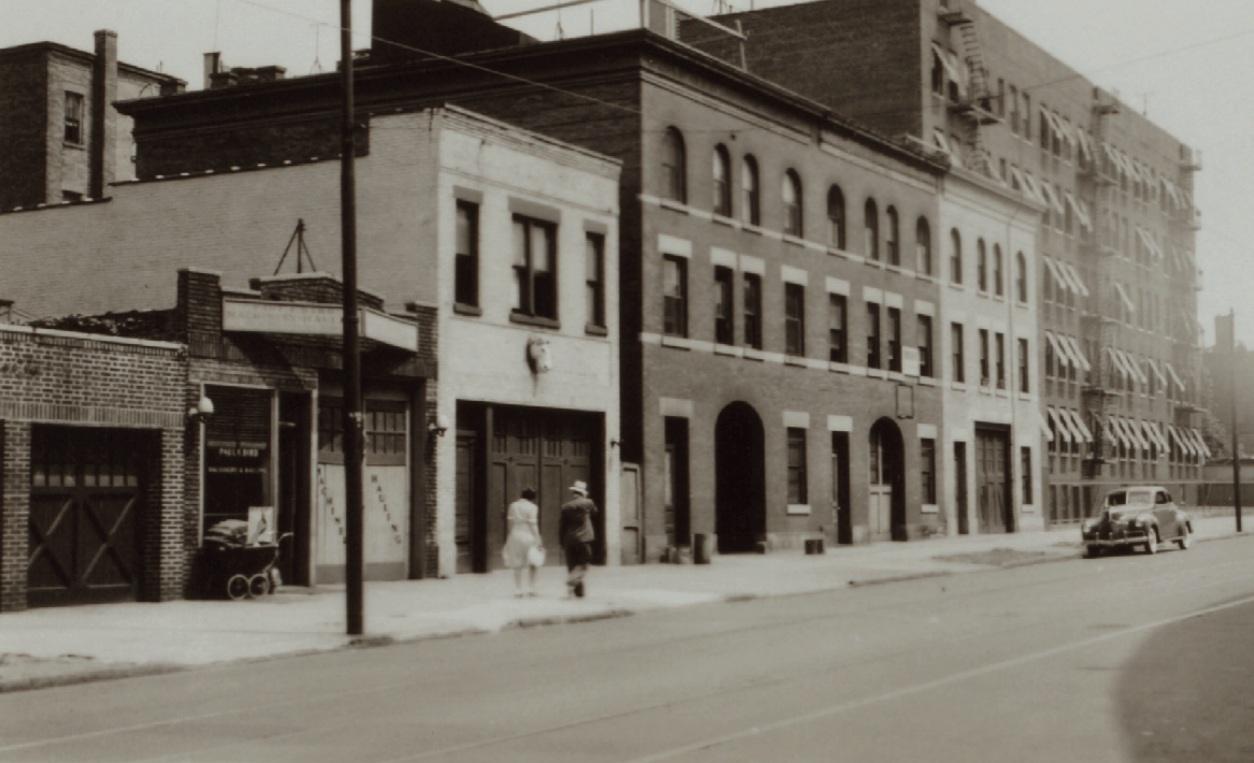
In the early days of historic preservation, which was often in the hands of the doyennes of gracious living themselves, only the homes of the rich and historically important were thought to be worthy of preservation, so there was a great hue and cry to save the mansions of Monticello, Mt. Vernon, and the like, but no rush to save the stables and slave quarters.
We’ve come a long way since then and now see that the buildings that housed the workers and the everyday folk have historic significance as well, and give us a fuller picture of the life and times of those who lived and worked in them. After all, many of us are them, not the people in the mansions.
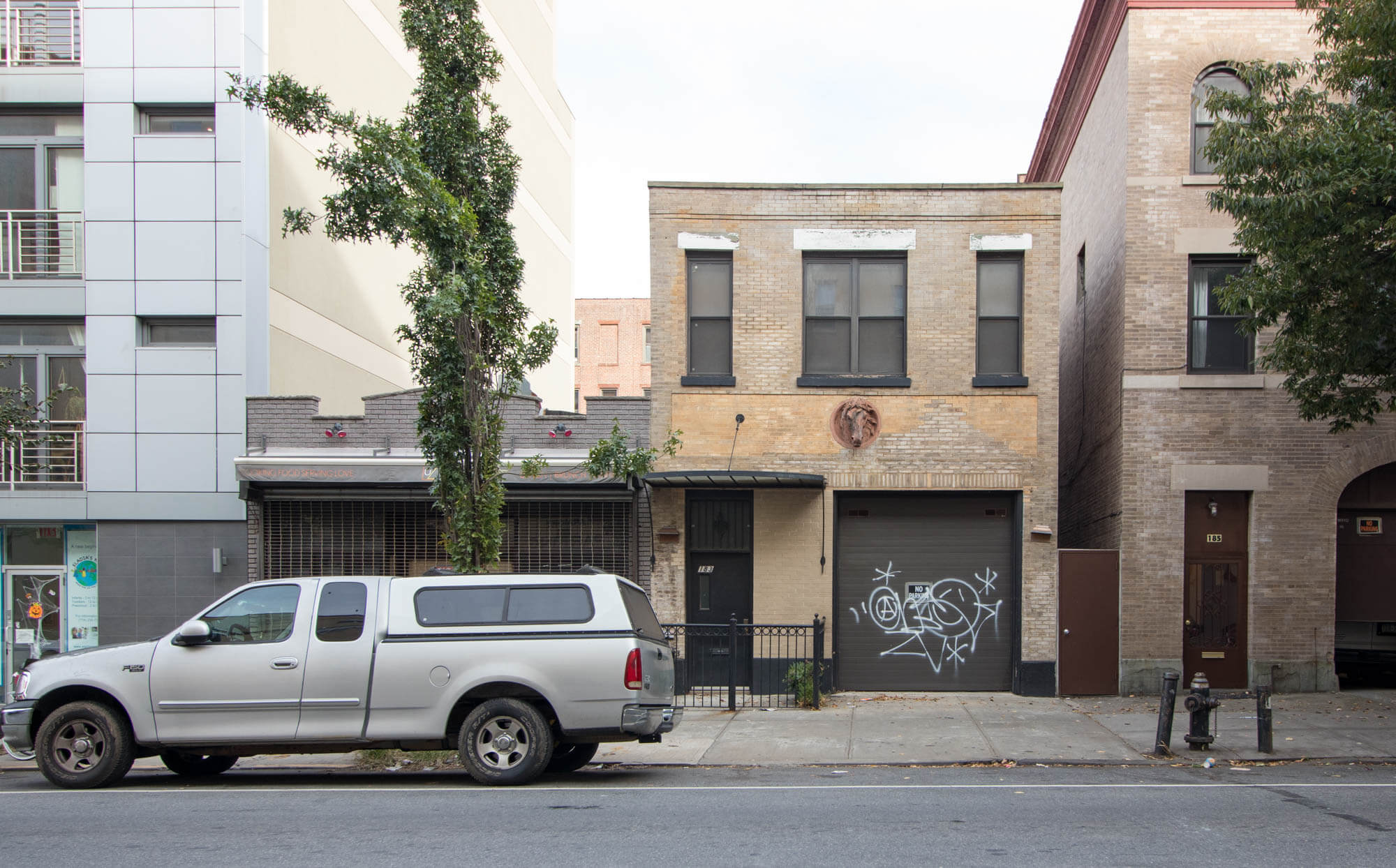
This relatively small stable was built sometime between 1886 and 1907. Vanderbilt has long been the service street to the mansions of Clinton Avenue, and most of the lots between Myrtle and Lafayette Avenue once held stables and carriage houses or were the backyards of those mansions. It’s rather ironic that here in Brooklyn, the Vanderbilt name would be associated with service buildings, not the mansion streets, considering how successful and wealthy one branch of the family became.
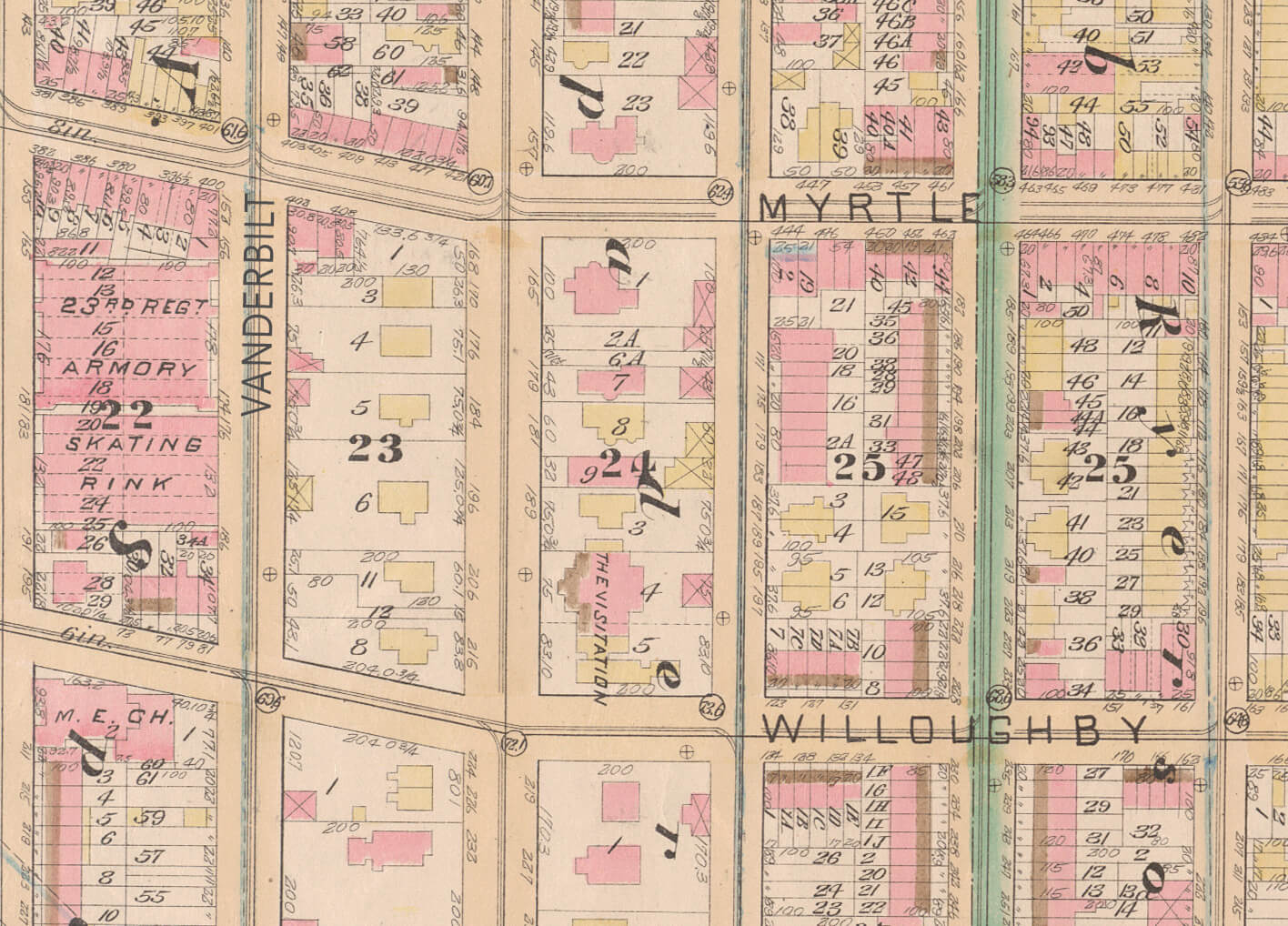
In 1886, the Clinton Avenue block behind this block had only six wood-frame mansions spread across it. Some of the properties had service buildings on Vanderbilt, including the one that encompassed this site, but it wasn’t this building. By 1907, all of the mansions were gone, or altered, replaced by row houses and larger masonry houses. This building was here by then, along with a row of larger carriage houses, which also are still in existence.
I would guess that this stable served one of the houses in the brownstone group that is 174 to 180 Clinton Avenue, perhaps number 178, which is directly behind it. That group was also built sometime between 1886 and probably 1893, after which time brownstone was out of favor as a building material. All of the stables were likely built between 1893 and 1900 (the atlas maps cover only 1886 and 1907). At that time, light colored brick was one of the building materials of choice, as were the cleaner lines of the Renaissance Revival style.
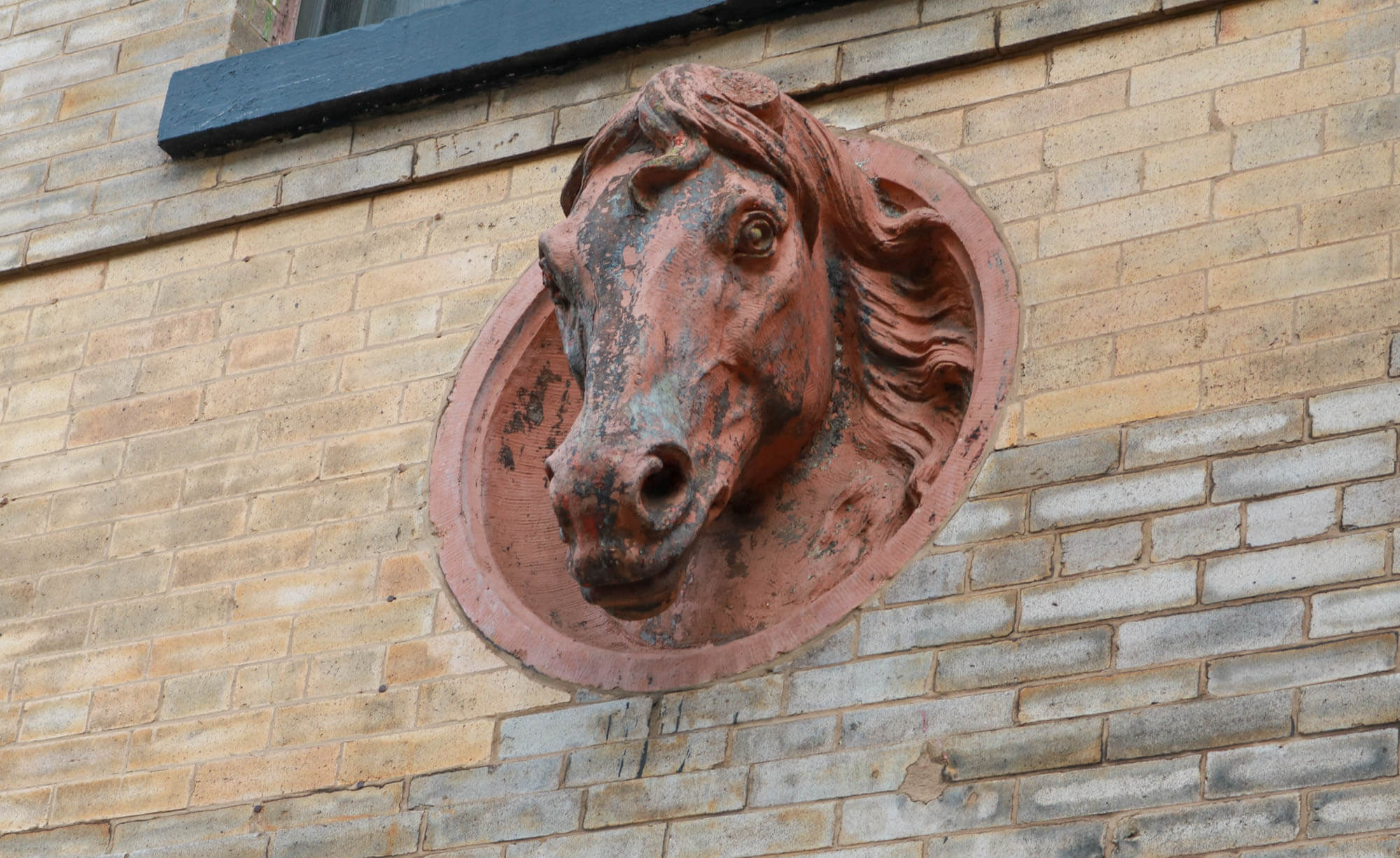
What makes this building so noticeable is the noble bust of a horse, which protrudes out into the sidewalk as an identifiable marker that this was indeed, a stable. Which makes one think, perhaps this was not a stable for one of Clinton Avenue’s houses, but a small public stable, or the business of a farrier, or someone who repaired or sold tack or another horse-and-carriage-related business. The bust of the horse could have been signage. I could find no mention of this address anywhere, so it’s anyone’s guess. Maybe it was the owner’s favorite horse. It’s a fabulous bust, and it’s a miracle it survived.
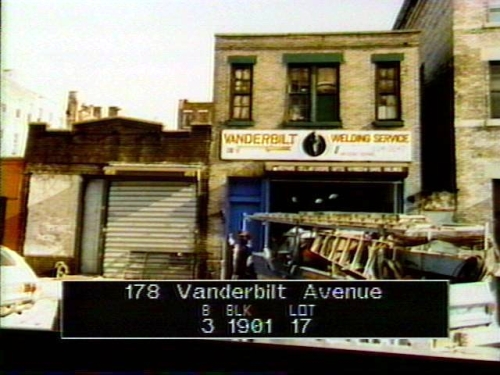
After the days of horses and carriages were over, this building was used for different kinds of businesses over the years. All respected the bust, and it was never removed. A tax photo from 1982 shows the building as home to a welding business, and even then, his sign had a cutout to accommodate the horse. More recent owners have preserved it as well, and have converted the upper story to an apartment. Like almost all of Clinton Hill’s former stables, it is now a wonderfully intimate and individual work and living space. I bet someone along the way named the horse. I would.
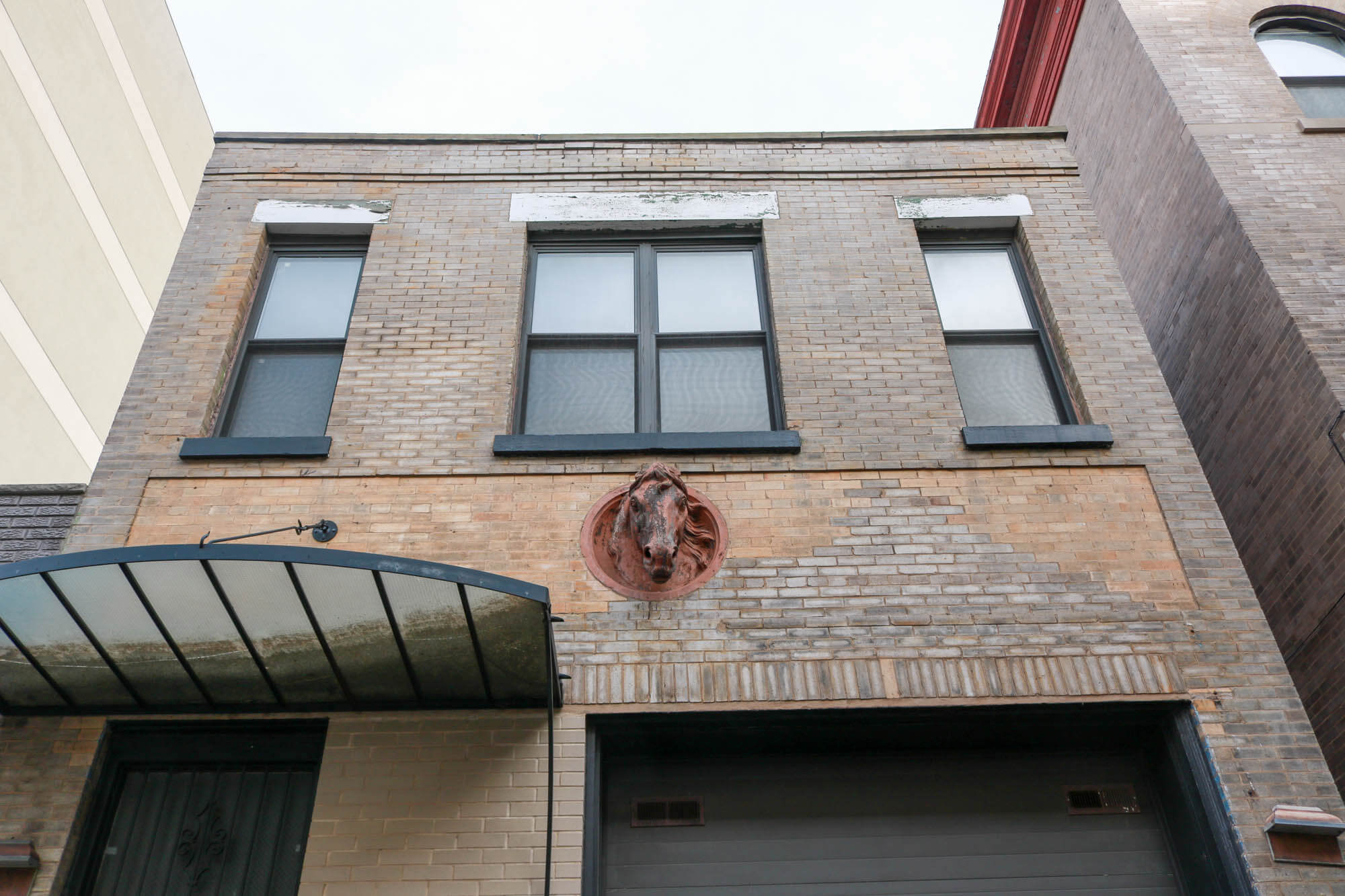
[Photos by Susan De Vries unless noted otherwise]
Related Stories
- Room for a Horse: The Charm of the Carriage House
- A Mansard-Topped Carriage House Charmer in Willow Town
- Building of the Day: 457 and 461 Vanderbilt Avenue, Matching Carriage Houses
Email tips@brownstoner.com with further comments, questions or tips. Follow Brownstoner on Twitter and Instagram, and like us on Facebook.





What's Your Take? Leave a Comment